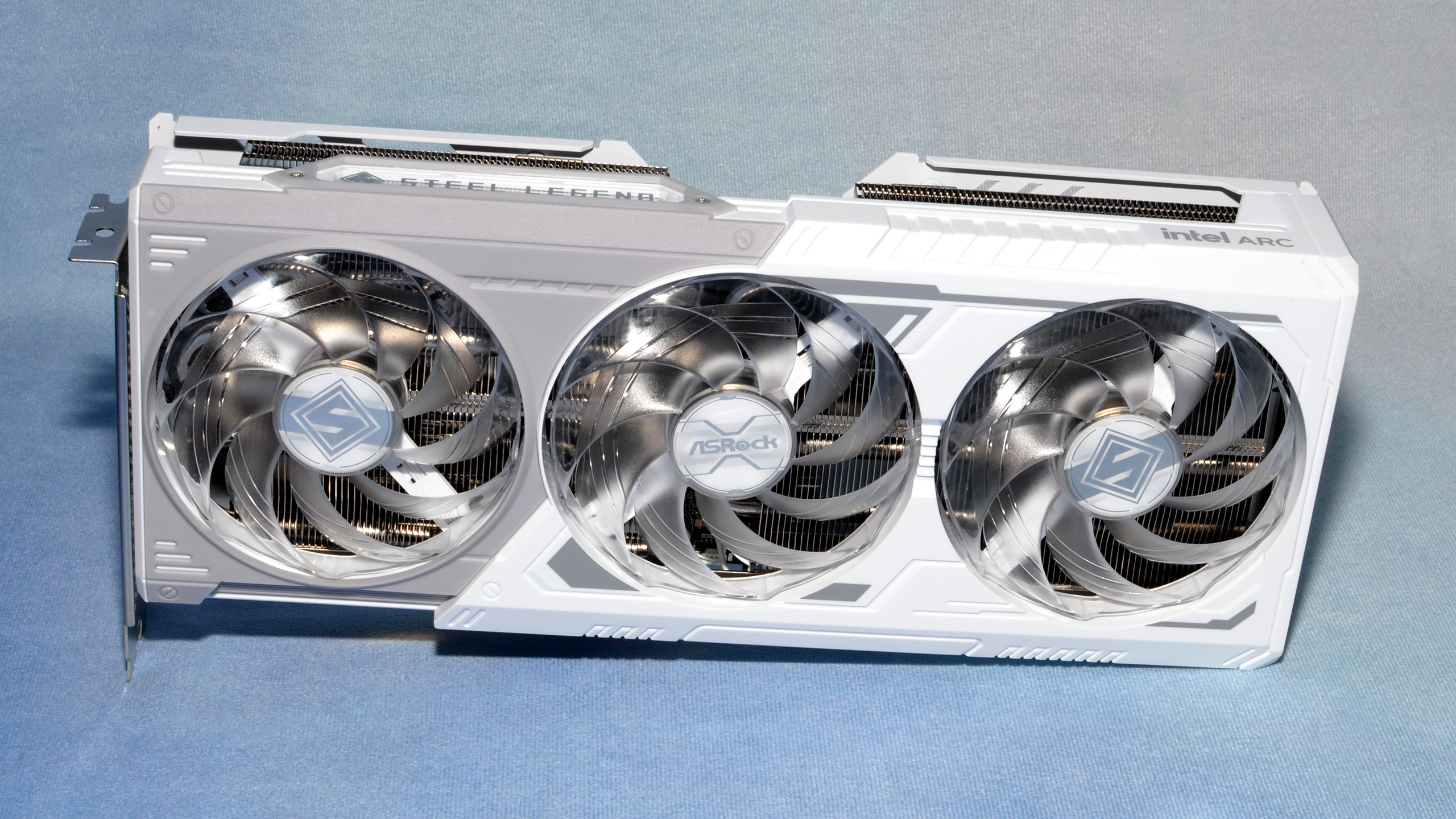
The Intel Arc B580 officially launched today, December 13, 2024. It's the new budget-friendly darling of the GPU world, ranking as one of the best graphics cards you can buy — if you can find it in stock. We've scoured the usual places for all the current listings and prices, and while many are out of stock already, we expect supplies to improve over the coming weeks.
Check our full review for the performance details, but the short summary is that the Arc B580 delivers an excellent blend of performance and features for a great price, starting at $249. Intel's own Arc B580 Limited Edition covers the MSRP base price, while partner cards range from $249 to $279 officially, but with retailers currently marking some models up to $300 and more. Arc B580 becomes decidedly less impressive at scalper prices, needless to say, and we don't recommend spending more than perhaps $300 at most — anything more than that and you're better off looking to alternatives like AMD's RX 7600 XT or even the 7700 XT.
Here are all the prices and links we've found, along with a rundown of the various Arc B580 models from the various manufacturers.
*Update: Although new stock of the Intel Arc B580 is trickling in weekly to retailers, they are selling out nearly instantly with demand outstripping the supply of the new $249 graphics card.
Last checked 01/14/2025
Besides Intel itself, six companies partnered up to produce Arc B580 GPUs, and most have a base model and a higher tier model on offer. Finding official MSRPs for the upgraded variants is a bit tricky at present, but we would guess most are $269 or $279 — and finding certain brands for sale in the U.S. may prove difficult in the near-term. Here's a rundown of the six brands and the available models from each.
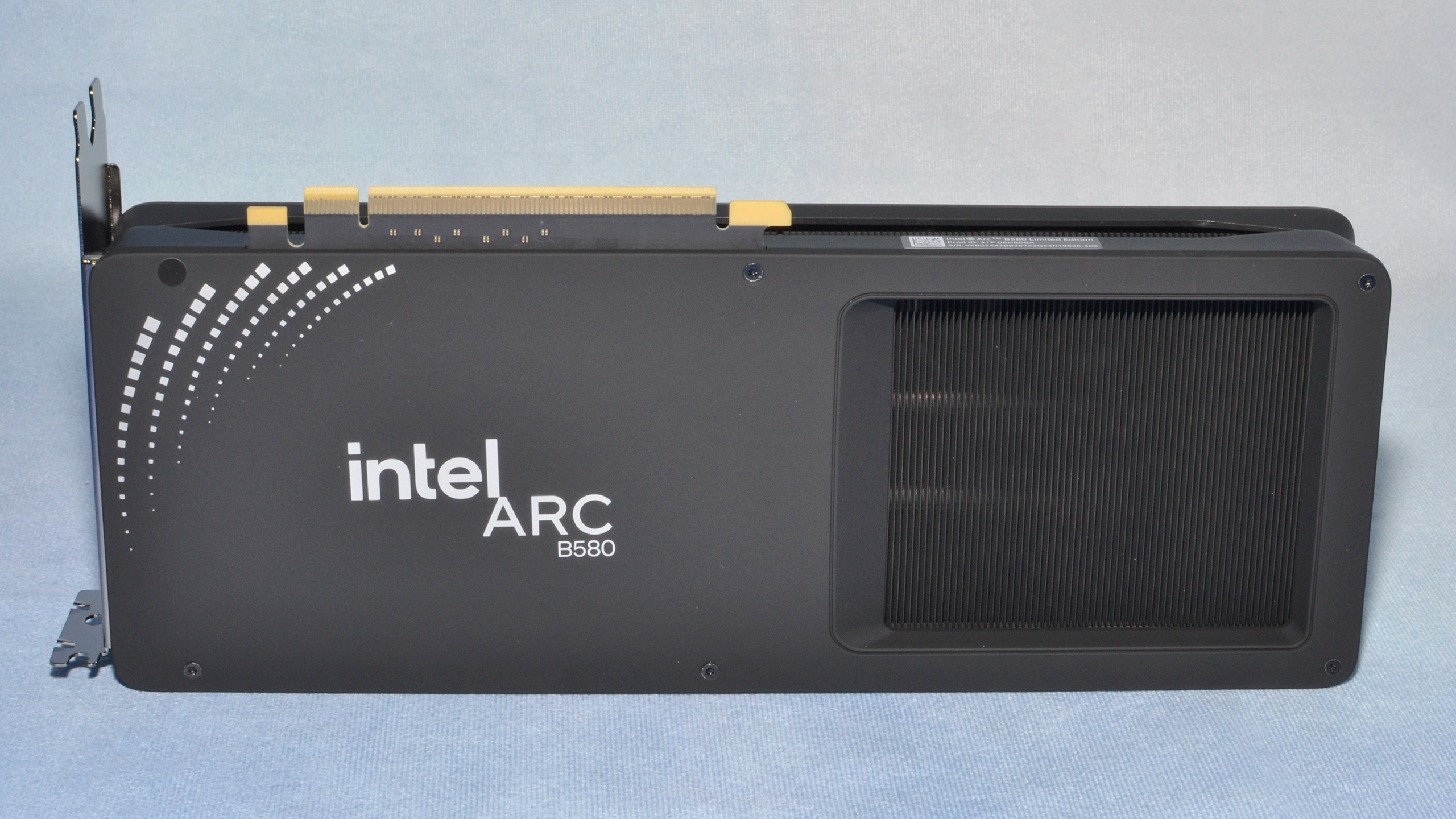
Intel's Arc B580 Limited Edition sets the bar that everyone else needs to clear. There's no RGB lighting, just a sleek and understated matte black card with a white "Intel ARC" logo that lights up on top. I'm not even sure if there's a way to turn off the LEDs, if that's something you wanted to do — not everyone wants their PC to glow.
With dual fans with integrated rims to improve static pressure and airflow, the Limited Edition ran cool and quiet in our testing. The back fan has a passthrough design for airflow, further improving cooling. It has a single 8-pin power connector, which should be sufficient even with manual overclocking. If you can find the Limited Edition in stock at $249, it's a great buy and an easy recommendation.
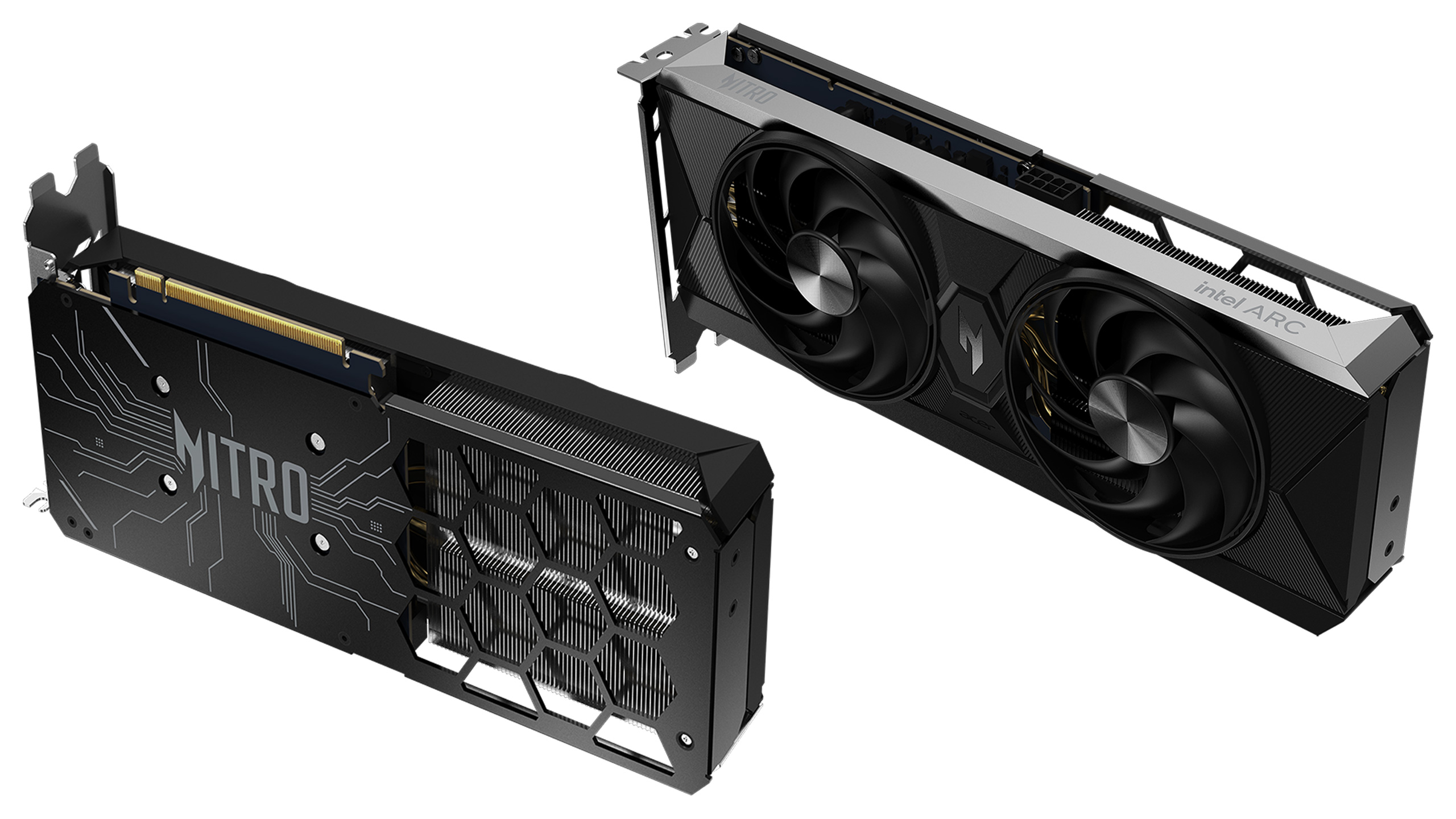
Acer has a single model available, the Arc B580 Nitro. It's interesting that Acer isn't using the Predator Bifrost branding that it used for it's previous generation Arc A-series GPUs, and also a bit interesting that the Nitro overlaps Sapphire's branding for Radeon GPUs. The official product page has some images and specifications, and Acer says the card will be on sale at Newegg this month (see Newegg promo codes), with Amazon availability in January. The card has an MSRP of $279, $30 more than the reference model.
We do have the Acer B580 Nitro coming for review, so stay tuned for that. The product name also indicates some form of factory overclock, but it also lists 2850 MHz — the same as the official card's boost clock. While Intel specifies a "Graphics Clack" of 2670 MHz, in our testing the Limited Edition ran at a near-constant 2850 MHz, so the third party cards will need to do more than 2850 MHz if they're going to offer any tangible performance increase.

ASRock will be the most recognizable graphics card brand for Arc B580, and likely the most readily available. It has two models, the white and gray themed Steel Legend OC and the dark gray Challenger. The Steel Legend also has triple fans and RGB lighting, while the Challenger has dual fans and, as far as we know, no lighting at all.
The Steel Legend OC comes with a Graphics Clock of 2800 MHz, but seems to have the same maximum 2850 MHz boost clock. (You can manually increase the boost clock, but the out-of-box experience will run at 2850 MHz based on our initial test results, which aren't complete yet.) It also comes with dual 8-pin power connectors, so it should be fun to see just how far we can push overclocking with this model. The MSRP is $269.
The Challenger OC has a Graphics Clock of 2740 MHz, but as noted above, it will probably run at 2850 MHz like all the other B580 models. The MSRP for this one is only $10 cheaper, but if you want a more compact dual-fan model and don't like or want RGB lighting, it should be a good option as well.
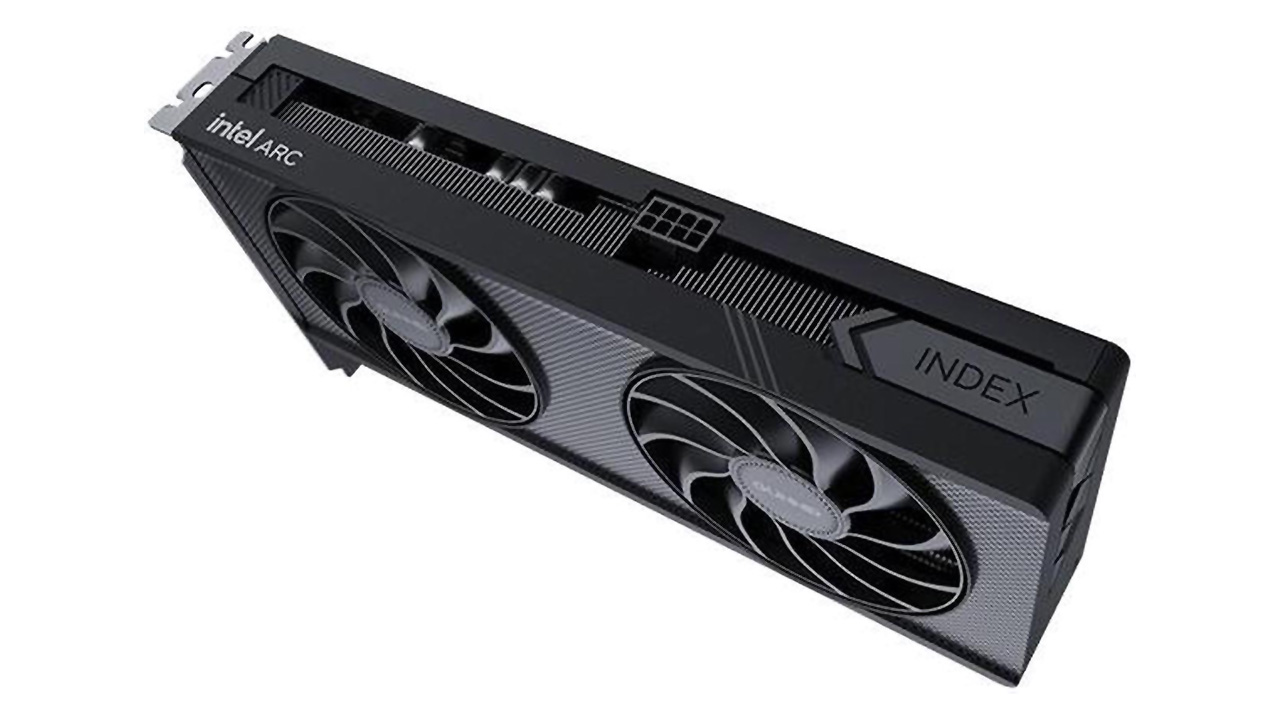
Gunnir was one of the first Intel Arc partners in 2022, with the Arc A380 launching in China. We haven't seen too many Gunnir cards in the U.S. but that may change with the Arc B-series models. There are two variants coming, the larger triple-fan Photon and a smaller dual-fan Index. There may be other models as well, as we've seen images of a B580 TRI, but we'll have to wait and see what actually gets released.
We don't have any specs or official pricing details for Gunnir yet, though there are a couple of massively price inflated listings on Newegg and Amazon. $379 for an Arc B580? No thanks. That seems to be a marketplace scalper / profiteer trying to take advantage of the initial excitement.
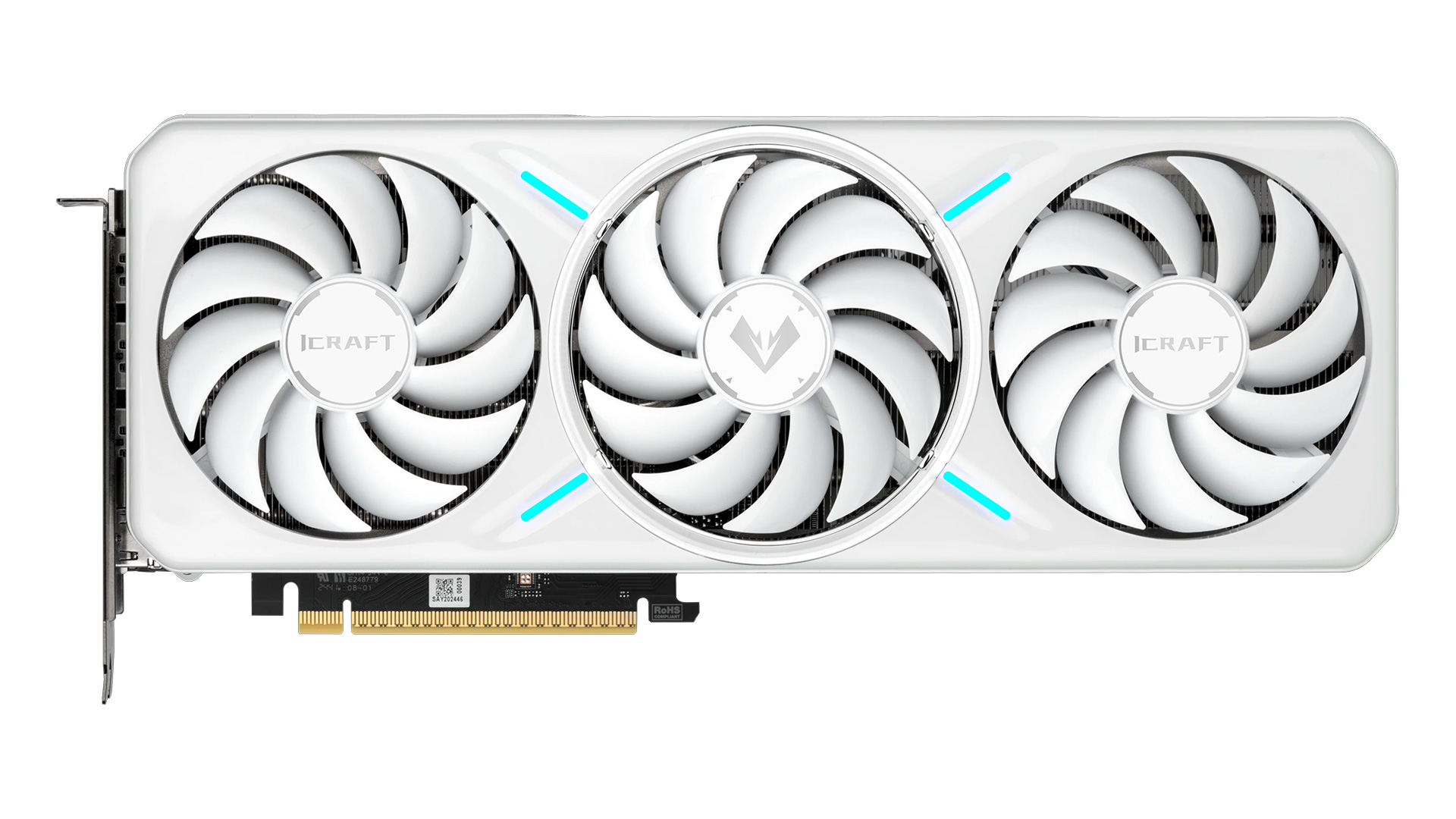
We've tested Maxsun motherboards in the past, and the company has now partnered with Intel to make Arc B-series graphics cards. (It has previously made AMD and Nvidia graphics cards as well, though nothing more recent than the RX 500-series and RTX 30-series.)
Maxsun has a larger triple-fan iCraft card, which is also white, and a smaller dual-fan black Milestone model. We do anticipate seeing Maxsun graphics cards on sale in the U.S. in the coming months, and you can see a variety of older GPUs on Newegg from the brand. Specifications for both models appear to be pure reference (2670 MHz Graphics Clock with a 2850 MHz boost clock), but we don't have pricing information yet.
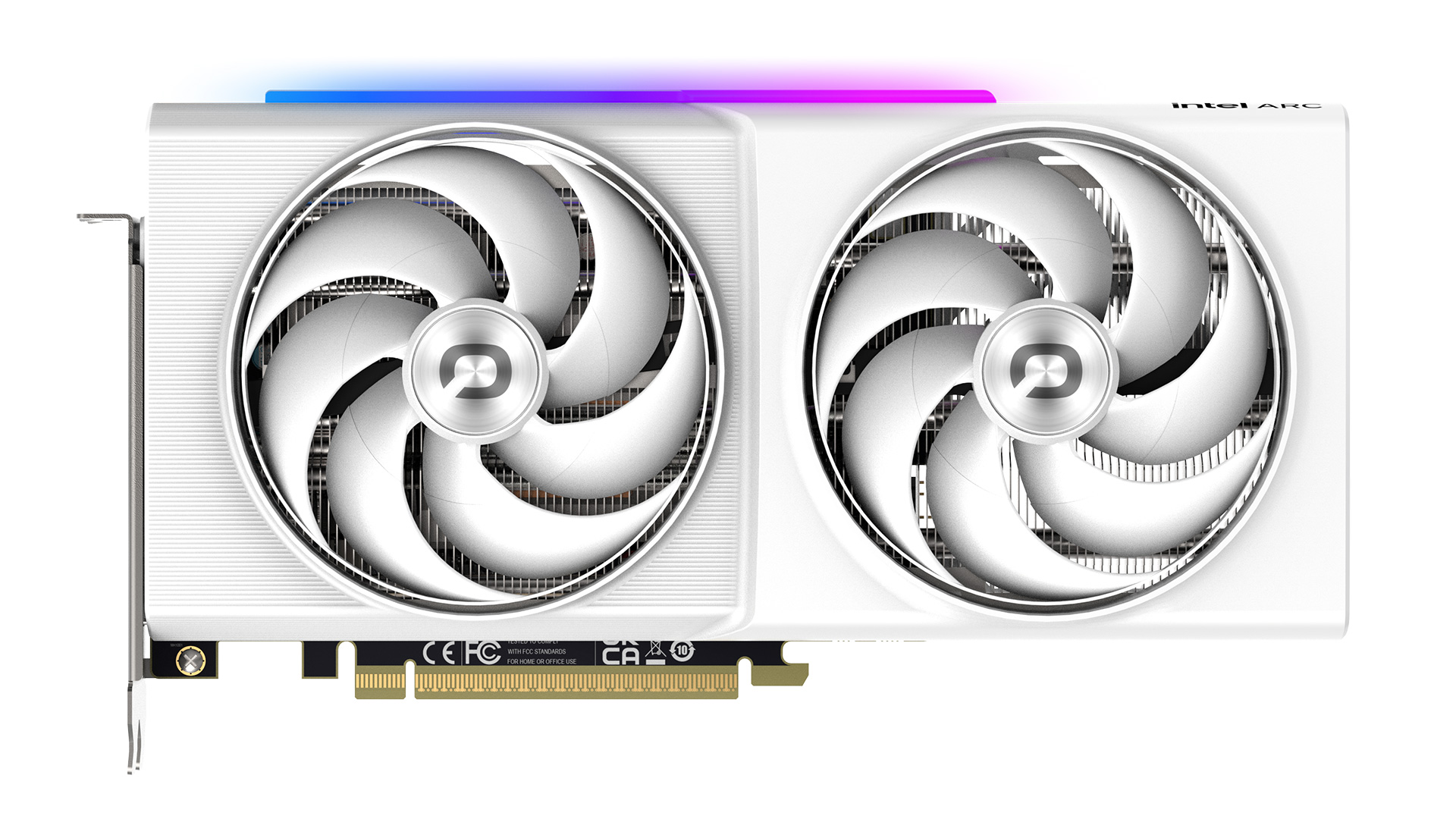
Onix is a new company for graphics cards, reportedly owned by the same parent company that owns the Sapphire brand. There are two B580 models, the upper tier Lumi Arc B580 clad in white, and the base model Odyssey Arc B580 in black attire. Both are dual-fan designs.
Looking at the specs, the Lumi does feature a factory overclock of sorts. It has a 2740 MHz Graphics Clock — but the same 2850 MHz maximum boost clock, as far as we're aware. It also has RGB lighting, which shows up nicely with the white trim. It has a single 8-pin power connector as well.
The Odyssey B580 sticks with reference specs, and mostly appears to be the same base design as the Lumi, sans RGB lighting and with a black shroud. We don't have an MSRP for either model, and it's not clear whether Onix will be selling cards in the U.S. and other locations, or if it will primarily be for China.
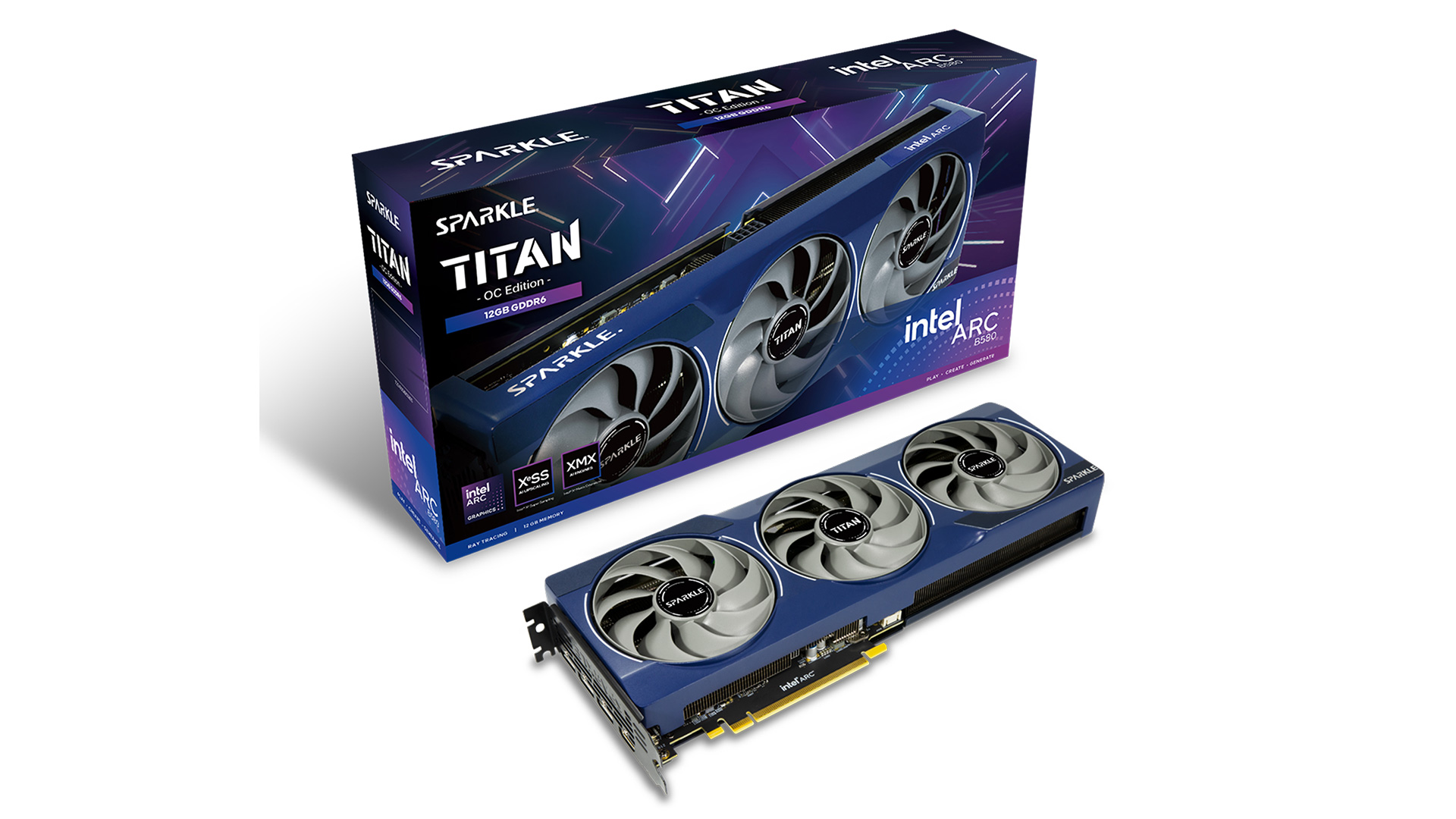
Wrapping things up, we have the Sparkle B580 card. Sparkle was one of Intel's partners on the Arc A-series, and we tested an Arc A580 from the company. The B580 mixes things up with what appears to be new and improved medium-gray colored fans. (We don't know if they're actually improved, but they're a different color at least.)
The Titan B580 features a triple-fan design, with a blue breathing light effect. It comes with a 2740 MHz factory overclock, as well as a second level 2800 MHz overclock option. It also has a blue "S" graphics card support stand. The MSRP for the Sparkle Arc B580 Titan is $269 at Newegg (though it's currently out of stock). We have the Titan for review as well, once we've finished testing.







